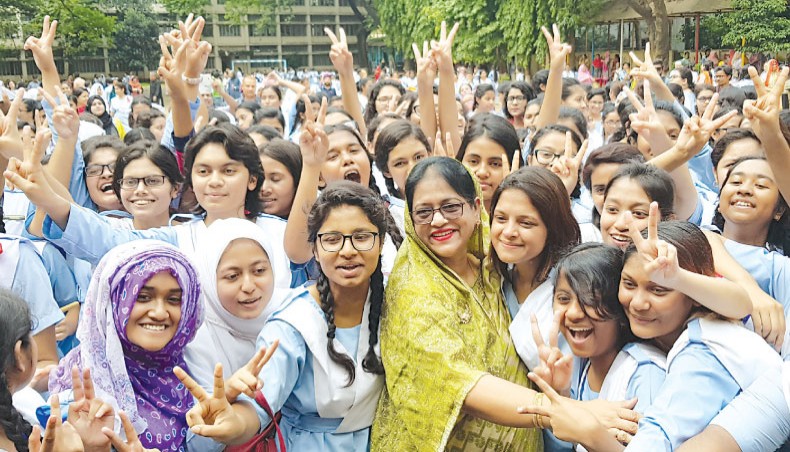SSC, EQUIVALENT EXAM RESULTS Rural-urban gap widens
The rural-urban divide in education has widened due mainly to lack in facilities in the rural areas, which been reflected in the results of Secondary School Certificate and equivalent examinations published on Sunday.
The number of educational institution having less than 50 per cent pass rate in SSC and equivalent examinations has increased six folds to 3,355 in five years and most of the institutions with 0-50 per cent pass rate are from the rural areas.
Students of rural districts also lag behind their fellows in the cities in terms of pass rate and getting highest grade point average 5.
Academics and education officials have blamed shortage of competent teachers, laboratories, libraries and other facilities for the rural students’ falling behind their urban fellows.
Rural students cannot afford coaching, private tuition and do not get better guidance from parents at home and teachers at classrooms, they say.
Former Dhaka University institute of education and research Professor Siddiqur
Rahman said that difference in facilities in schools was creating the gap in terms of results.
Siddiqur Rahman was one of the National Curriculum and Textbook Board’s chief consultants to head the team which developed the existing curriculum also said that students in Dhaka usually could afford coaching, private tuition and get better guidance from parents at home and teachers in classrooms which helped them go ahead of students of outlying districts.
Most of the rural schools lack trained teachers, particularly in mathematics and English, library and laboratories and students of these schools fail to compete with others, said Sylhet education board chairman Abdul Quddus.
Again, the numbers of educational institutions with a zero per cent pass rate increased four folds in the same period against the overall pass rate of 92-79 per cent in 2014-2018, shows inter education board statistics.
According to the results, less than 50 per cent students passed from 3,355 schools and madrassahs in 2018, over a six-fold increase from 543 in 2014.
The number of such institutions was 3,001 in 2017, 875 in 2016 and 947 in 2015, said board officials.
The number of institutions with a zero per cent pass rate was 109 in 2018, over a four-fold increase from 24 in 2014.
Number of institutions with zero per cent pass was 93 in 2017, 53 in 2016 and 47 in 2015.
This year, 79.40 per cent students passed the SSC exam under eight general boards while 92.67 per cent students passed the exam in 2014.
Students of rural areas lag behind those in the cities also in terms of pass rate and getting highest grade point average 5.
This year, 90 per cent students from the capital passed the SSC exam while 70 per cent students from Rajbari and 72.14 per cent from Faridpur passed the exam.
The pass rate was 74.10 per cent in Sylhet while 66.99 per cent per cent in Moulavibazar and 68.53 per cent in Sunamganj.
The results showed that 24 per cent of all students who passed the exam from Dhaka secured GPA 5, while only 3.53 per cent of all students passed from Rajbari and 4.14 per cent of all students from Faridpur secured GPA 5 this year.
Competent teachers, laboratories, libraries and other facilities can play a significant role in better result, said educationists.
Inter Services Public Relation Directorate statement on Sunday said that almost 100 per cent or 580 out of 583 students of 12 cadet colleges achieved highest grade point average 5 in this year’s SSC exam.
Last year, 622 out of 624 students of the cadet colleges achieved GPA 5.
Education minister Nurul Islam Nahid said that measures would be taken against the institutions whose success rate was zero.
There are some institutions from which handful of students took exam and they all failed, which increased the number of educational institutions with zero pass rate, he said.
‘We would analyse why schools are performing poorly,’ he added.
News Courtesy: www.newagebd.net











